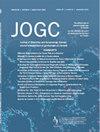Perspectives and Motivational Factors Surrounding Decision-Making in Women With Cancer Considering Fertility Preservation
IF 2.2
Q2 OBSTETRICS & GYNECOLOGY
引用次数: 0
Abstract
Objectives
To assess perspectives of patients referred for urgent oncofertility consultation influencing whether to proceed or decline fertility preservation (FP).
Methods
An online survey was conducted in newly diagnosed cancer patients from August 2021 to July 2023 after an oncofertility consultation. Post-pubertal people with ovaries, a recent cancer diagnosis, and those who were referred for urgent oncofertility preservation consultation were eligible. Primary outcomes were patients’ experiences and final treatment decisions; secondary outcomes included cycle outcomes.
Results
Overall, 67/126 (53.2%) completed the survey and met our study criteria. Median age was 28 years (IQR 29–36). Most referrals were from medical (47.8%; 32/67) and surgical (35.8%; 24/67) oncologists with a median interval of 3 days (IQR 2–6) from referral to consultation. Breast (64.2%; 43/67) and hematological (11.9%; 8/67) cancers were most common. Overall, 55/67 (82.1%) proceeded with cryopreservation, 38/55 (69.1%) oocyte cryopreservation, 12/55 (21.8%) embryo cryopreservation, and 5/55 (9.1%) both. Of those planning chemotherapy/radiation, 42/56 (75%) chose gonadotropin-releasing hormone agonist. Of those who declined cryopreservation, 3 (25%) chose gonadotropin-releasing hormone agonist treatment as the only form of FP; 9/67 (13.4%) chose no FP treatment. The most common reasons for not cryopreserving included: no time to complete FP before cancer treatment (41.7%; 5/12) and delaying cancer treatment (41.7%; 5/12). The most common motivating factors for pursuing FP were concern for future fertility (72.4%; 42/58) and health care provider advice (48.2%; 28/58).
Conclusions
Most patients who received urgent oncofertility counselling proceeded with treatment. Common reasons for declining were timing of FP and delaying oncological treatment.
考虑保留生育能力的癌症妇女决策的观点和动机因素。
目的:评估紧急不孕咨询患者的观点对是否继续或放弃生育保留(FP)的影响。方法:于2021年8月至2023年7月对新诊断的癌症患者进行在线调查。青春期后卵巢,近期癌症诊断,和那些谁被转诊为紧急保癌咨询符合条件。主要结局是患者的经历和最终的治疗决定;次要结局包括周期结局。结果:总体而言,67/126(53.2%)完成了调查,符合我们的研究标准。中位年龄28岁(IQR 29-36)。大多数转诊来自医疗机构(47.8%;32/67)和外科(35.8%;24/67),从转诊到会诊的中位间隔为3天(IQR 2-6)。乳腺癌(64.2%;43/67)和血液学(11.9%;癌症是最常见的。55/67(82.1%)进行冷冻保存,38/55(69.1%)进行卵母细胞冷冻保存,12/55(21.8%)进行胚胎冷冻保存,5/55(9.1%)同时进行冷冻保存。在计划化疗/放疗的患者中,42/56(75%)选择GnRH激动剂。在拒绝冷冻保存的患者中,3例(25%)选择GnRHa治疗作为FP的唯一形式。9/67(13.4%)患者选择不使用FP治疗。不冷冻保存的最常见原因包括:在癌症治疗前没有时间完成FP (41.7%);5/12)和延迟癌症治疗(41.7%;5/12)。追求计划生育最常见的激励因素是对未来生育的担忧(72.4%;42/58)和保健提供者咨询(48.2%;28/58)。结论:大多数接受紧急不孕咨询的患者接受了治疗。下降的常见原因是计划生育的时间和延迟肿瘤治疗。
本文章由计算机程序翻译,如有差异,请以英文原文为准。
求助全文
约1分钟内获得全文
求助全文
来源期刊

Journal of obstetrics and gynaecology Canada
OBSTETRICS & GYNECOLOGY-
CiteScore
3.30
自引率
5.60%
发文量
302
审稿时长
32 days
期刊介绍:
Journal of Obstetrics and Gynaecology Canada (JOGC) is Canada"s peer-reviewed journal of obstetrics, gynaecology, and women"s health. Each monthly issue contains original research articles, reviews, case reports, commentaries, and editorials on all aspects of reproductive health. JOGC is the original publication source of evidence-based clinical guidelines, committee opinions, and policy statements that derive from standing or ad hoc committees of the Society of Obstetricians and Gynaecologists of Canada. JOGC is included in the National Library of Medicine"s MEDLINE database, and abstracts from JOGC are accessible on PubMed.
 求助内容:
求助内容: 应助结果提醒方式:
应助结果提醒方式:


